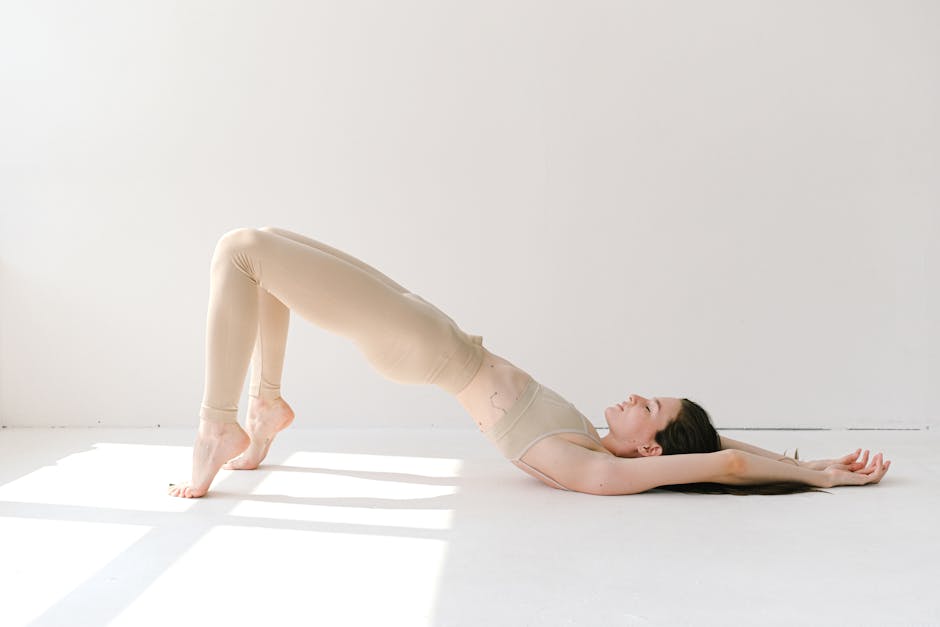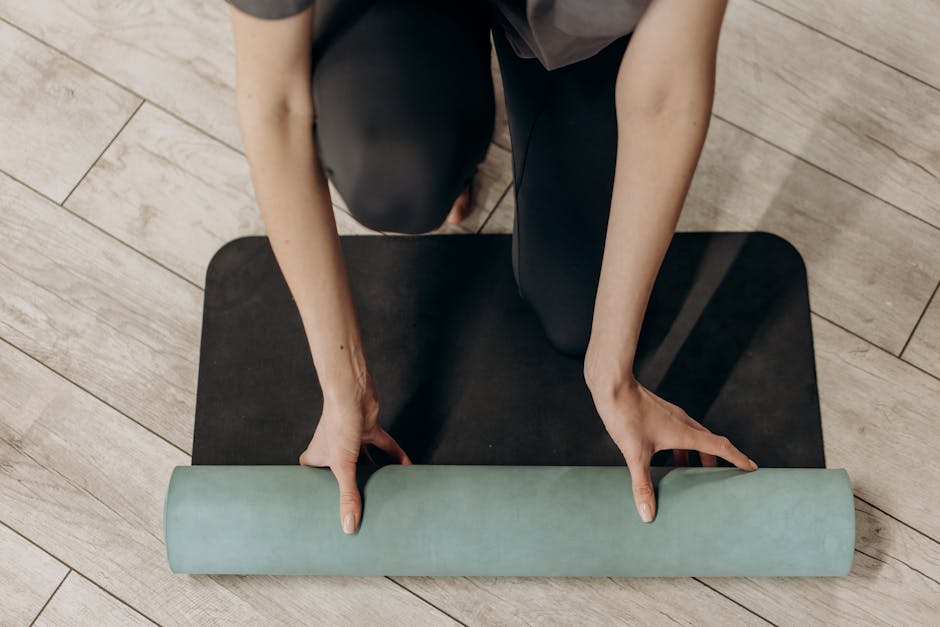Mindful Movement: A Path to Physical and Mental Well-being
Introduction
Mindful movement, a term that encapsulates a variety of practices such as yoga, tai chi, and qigong, is a holistic approach to wellness that combines physical activity with mindfulness. It is a form of exercise that encourages participants to focus on their body’s movements and sensations in the present moment, promoting a deep connection between the mind and body.
Integrating mindful movement into our daily lives is more than just a fitness trend. It’s an essential component of a balanced lifestyle that can help us navigate the stresses and challenges of modern living. The practice of mindful movement can be a powerful tool for enhancing our physical health, mental well-being, and overall quality of life.
Whether it’s a yoga sequence performed at sunrise or a tai chi routine practiced in the park, mindful movement offers a unique opportunity to reconnect with our bodies, calm our minds, and cultivate a sense of inner peace. It’s a journey of self-discovery and personal growth that begins with a single step and a conscious breath.

Photo by Mikhail Nilov on Pexels
Benefits of Mindful Movement
Mindful movement offers a myriad of benefits that extend beyond the physical realm. It’s a holistic practice that nurtures the body, mind, and spirit, promoting overall health and well-being. Here are some of the key benefits of incorporating mindful movement into your daily routine:
Physical benefits
Practicing mindful movement can lead to significant physical improvements. These include increased flexibility and strength, enhanced balance and coordination, and a reduced risk of injuries. Regular practice can also contribute to better posture, improved cardiovascular health, and enhanced immune function.
| Physical Benefits | Explanation |
|---|---|
| Improved flexibility and strength | Regular practice can help to increase the range of motion in your joints and enhance muscle strength. |
| Enhanced balance and coordination | Mindful movement exercises often involve balancing poses and coordinated movements that can improve your stability and agility. |
| Reduced risk of injuries | By promoting body awareness and encouraging proper alignment, mindful movement can help to prevent injuries. |
Mental benefits
On the mental level, mindful movement can be a powerful tool for stress reduction and relaxation. It can help to quiet the mind, increase focus and concentration, and improve mood and emotional well-being. Regular practice can also foster self-awareness, enhance self-esteem, and promote a positive body image.
For instance, yoga, a popular form of mindful movement, is often used as a therapeutic tool in neurofeedback and addiction treatment to help individuals manage stress and cope with negative emotions. Similarly, tai chi, often referred to as “meditation in motion,” can be a valuable aid in cognitive restructuring, helping practitioners to cultivate a more positive and balanced mindset.
By integrating mindful movement into our daily routines, we can create a space for self-care and personal growth, fostering a deeper connection with ourselves and the world around us. #MindfulMovement #WellnessWarrior

Photo by Anna Shvets on Pexels
Different Types of Mindful Movement
There are many different types of mindful movement, each with its own unique philosophy, techniques, and benefits. Here, we’ll explore two of the most popular forms: yoga and tai chi.
Yoga
Yoga is a holistic practice that originated in ancient India. It combines physical postures (asanas), breath control (pranayama), and meditation (dhyana) to promote physical health, mental clarity, and spiritual growth. There are many different styles of yoga, including Hatha, Vinyasa, Ashtanga, and Kundalini, each offering a unique approach to mindful movement.
Yoga poses and sequences are designed to stretch and strengthen the body, enhance flexibility, and promote balance and coordination. They can range from gentle and restorative poses to more dynamic and challenging sequences. Regardless of the style or intensity, the key to yoga practice is mindfulness – maintaining a focused awareness on the breath and the body’s movements and sensations.
Practicing yoga can be a powerful way to cultivate mindfulness and promote a sense of inner peace and well-being. It’s a journey of self-discovery that can help us to reconnect with our bodies, calm our minds, and awaken our spirit. #YogaLife
Tai Chi
Tai Chi is a form of mindful movement that originated in China. It’s a martial art that combines slow, flowing movements with deep breathing and mental focus. The philosophy of Tai Chi is rooted in the principles of Taoism, which emphasize balance, harmony, and the interconnectedness of all things.
Tai Chi movements, also known as forms, are designed to cultivate chi, or life energy, and promote physical health and mental tranquility. The practice involves a series of movements performed in a slow, focused manner, accompanied by deep breathing. Each movement flows into the next without pause, ensuring that the body is in constant motion.
Practicing Tai Chi can be a powerful way to enhance balance and coordination, reduce stress, and promote a sense of peace and well-being. It’s a practice that encourages us to slow down, tune into our bodies, and cultivate a mindful awareness of the present moment. #TaiChiFlow

Photo by Mikhail Nilov on Pexels
How to Incorporate Mindful Movement into Daily Life
Integrating mindful movement into your daily life doesn’t have to be complicated or time-consuming. Here are some practical tips to help you get started:
Creating a dedicated space for practice
Having a dedicated space for your mindful movement practice can help to create a sense of ritual and intention. This doesn’t necessarily mean you need a separate room or a fancy home studio. It could be as simple as a quiet corner of your living room, a spot in your garden, or even a local park. The key is to choose a space that feels comfortable and inviting, where you can practice without distractions.
Setting aside regular time for mindful movement
Consistency is key when it comes to mindful movement. Try to set aside a specific time each day for your practice, whether it’s first thing in the morning, during your lunch break, or in the evening before bed. Even just a few minutes a day can make a big difference. Remember, it’s not about how long you practice, but the quality of your attention and intention during that time.
Integrating mindful movement into daily routines
One of the great things about mindful movement is that it can be integrated into your daily routines. You could start your day with a few yoga stretches, take a tai chi break in the afternoon, or wind down with a gentle qigong sequence before bed. You could even incorporate mindful movement into everyday activities, such as walking, cleaning, or gardening. The possibilities are endless!
Tips for Getting Started with Mindful Movement
If you’re new to mindful movement, here are some tips to help you get started:
Finding a suitable class or instructor
Joining a class or finding a qualified instructor can be a great way to learn the basics of mindful movement. They can guide you through the poses or movements, provide feedback on your alignment, and offer modifications if needed. You can find classes at local yoga studios, community centers, or even online.
Starting with beginner-friendly practices
It’s important to start with practices that are suitable for your fitness level and comfort zone. Beginner-friendly yoga styles like Hatha or Restorative can be a good starting point. If you’re interested in tai chi, look for a class that offers an introduction to the basic movements and principles.
Listening to your body and practicing at your own pace
Remember, mindful movement is not about pushing your body to its limits or comparing yourself to others. It’s about listening to your body, respecting its limits, and practicing at your own pace. If a pose or movement doesn’t feel right, it’s okay to modify it or skip it altogether. The most important thing is to stay present, breathe, and enjoy the journey. #MindBodyConnection
Conclusion
In conclusion, mindful movement offers a holistic approach to wellness that can enhance our physical health, mental well-being, and overall quality of life. By integrating mindful movement into our daily routines, we can cultivate a deeper connection with our bodies, calm our minds, and foster a sense of inner peace and well-being.
Whether you choose to practice yoga, tai chi, or any other form of mindful movement, remember that the journey is just as important as the destination. So take a deep breath, step onto your mat or into your garden, and let the journey begin. #BalanceAndHarmony
As you embark on your mindful movement journey, remember to be patient with yourself, celebrate your progress, and most importantly, enjoy the process. After all, mindful movement is not just a form of exercise, but a way of life. So why wait? Start your mindful movement journey today and discover the transformative power of mindful movement. #SelfCareMovement



